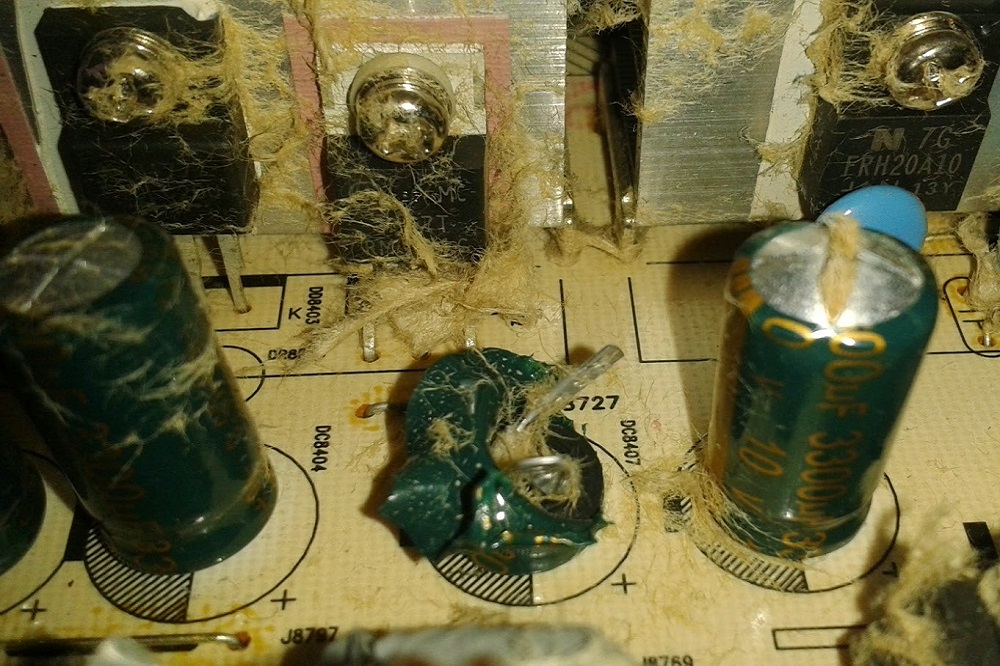Exploding Capacitors: Understanding The Risks And Solutions

In this episode of Stanford Advanced Materials, host Eric Smith welcomes electrical engineering expert Dr Alejandro García. They examine the reasons why some electrolytic capacitors explode. The discussion presents the function of these capacitors and the risks they may present.
Dr Alejandro García explains that manufacturing errors, environmental stresses and internal breakdowns may cause capacitor failures. He describes recent advancements in materials science and technologies designed to prevent such failures. Engineers and electronics professionals may use the insights provided to improve project safety and efficiency.
If you require further details about the discussion, please submit an enquiry via the link provided or visit our social media channels.
Welcome back to Stanford Advanced Materials. I’m Eric Smith, your host, and today we’re tackling an issue that’s critical for engineers and electronics enthusiasts alike—why do electrolytic capacitors explode? This is a topic that can cause real headaches in the field, and to help us navigate it, we have Dr. Alejandro García, a seasoned expert in electrical engineering. Thanks for joining us today, Dr. García!
Thanks, Eric! It’s great to be here to dig into this important and often misunderstood topic.
So, let’s start with the basics. What exactly is an electrolytic capacitor, and why is it so commonly used in electronics?
An electrolytic capacitor is a type of capacitor that uses an electrolyte to achieve higher capacitance than other capacitor types. They’re ubiquitous in electronics because they can store a lot of energy in a small package. However, this also makes them more prone to issues like explosions if not handled properly.
Explosions are obviously a huge concern. What are the main reasons why these capacitors explode?
There are several factors. Poor manufacturing processes, damage to the shell insulation, and sealing issues are common culprits. Internal dissociation, where the capacitor starts breaking down from within, can also lead to a buildup of gases that cause the capacitor to burst. Plus, if capacitors aren’t properly discharged, residual charges can lead to explosive reactions.
That’s pretty intense! What about environmental factors? How do they play a role?
Environmental factors like high temperatures, poor ventilation, and excessive operating voltages can all contribute to capacitor failures. These factors increase the stress on the capacitor, accelerating wear and tear and ultimately leading to catastrophic failures if not properly managed.
It sounds like there’s a lot to consider. What advancements are being made to reduce these risks?
Absolutely. Advances in materials science are leading to more robust capacitor designs, and smart technologies are being integrated to monitor capacitor health in real-time. Improved manufacturing processes are also reducing the incidence of defects, making modern capacitors much safer.
That’s reassuring to hear. Before we wrap up, any final thoughts on how engineers can prevent these explosions?
The key is awareness and prevention. Understanding the causes of capacitor failures and staying informed about the latest advancements are crucial. Proper handling, storage, and installation practices can go a long way in preventing issues before they arise.
Thank you so much, Dr. García, for your insights. This has been a really enlightening discussion on a topic that’s vital for anyone working with electronics.
My pleasure, Eric. It’s always great to share knowledge that can help improve safety and reliability in the field.
And to our listeners, thanks for tuning in to Stanford Advanced Materials. If you found this episode useful, be sure to subscribe and stay connected for more expert insights. Until next time, keep exploring the fascinating world of materials and technology!

 Bars
Bars
 Beads & Spheres
Beads & Spheres
 Bolts & Nuts
Bolts & Nuts
 Crucibles
Crucibles
 Discs
Discs
 Fibers & Fabrics
Fibers & Fabrics
 Films
Films
 Flake
Flake
 Foams
Foams
 Foil
Foil
 Granules
Granules
 Honeycombs
Honeycombs
 Ink
Ink
 Laminate
Laminate
 Lumps
Lumps
 Meshes
Meshes
 Metallised Film
Metallised Film
 Plate
Plate
 Powders
Powders
 Rod
Rod
 Sheets
Sheets
 Single Crystals
Single Crystals
 Sputtering Target
Sputtering Target
 Tubes
Tubes
 Washer
Washer
 Wires
Wires
 Converters & Calculators
Converters & Calculators
 Write for Us
Write for Us
